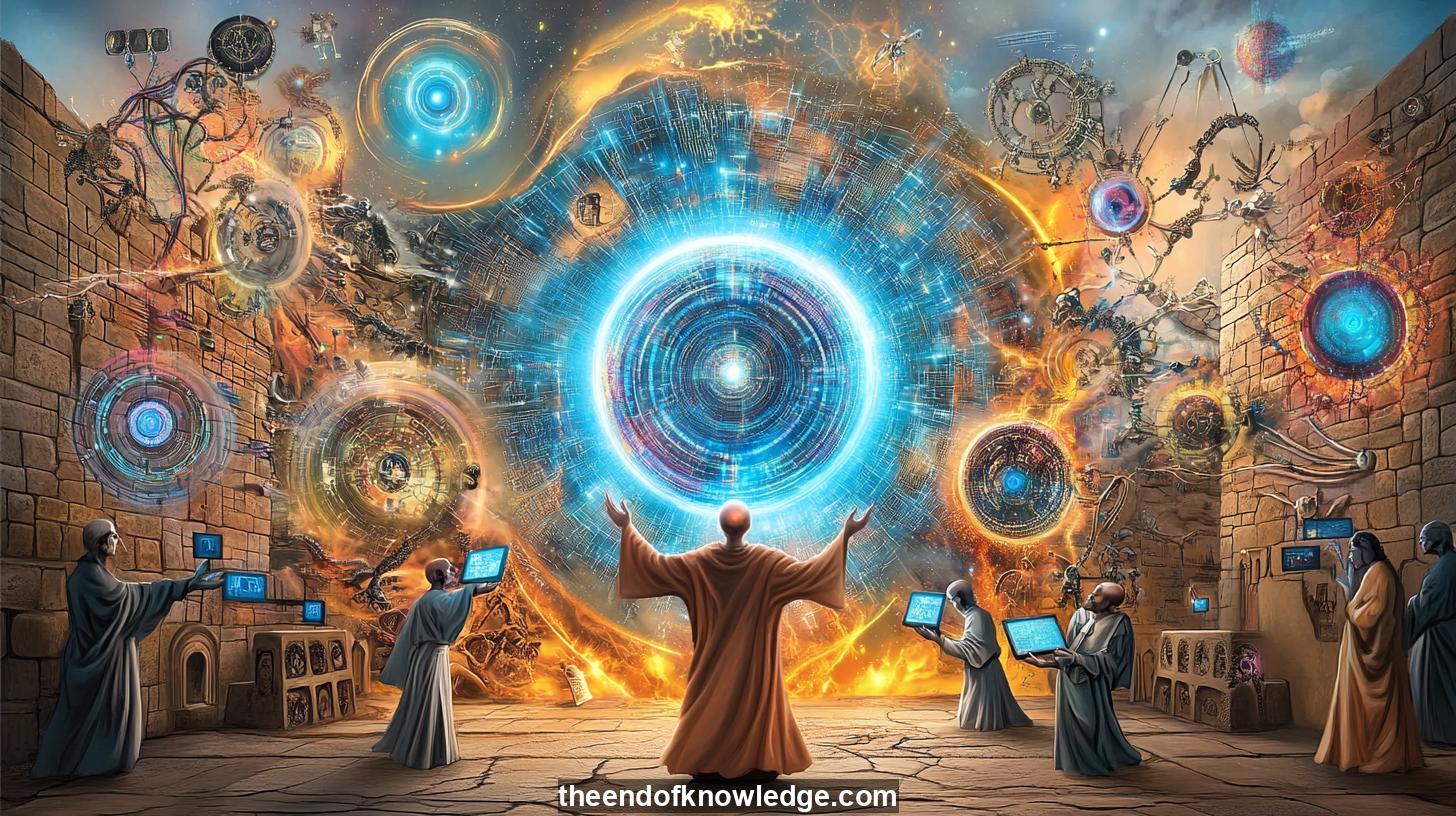 >
>
Concept Graph, Resume & KeyIdeas using DeepSeek R1 :
Resume:
explores the intersection of technology, spirituality, and human evolution, drawing parallels between historical theological concepts and modern advancements in artificial intelligence (AI). It delves into the idea of a "third state" of human history, inspired by the theological writings of Joaquin de Fiore, who envisioned a future dominated by the Holy Spirit. This concept is reinterpreted in the context of AI, suggesting that the emergence of superintelligence could mark a new era of human evolution.30 Key Ideas:
1.- explores the intersection of technology, spirituality, and human evolution.
2.- It draws parallels between historical theological concepts and modern AI advancements.
3.- Joaquin de Fiore's vision of a "third state" is reinterpreted in the context of AI.
4.- The emergence of superintelligence is seen as a potential new era for humanity.
5.- Marvin Minsky and Ray Kurzweil are key figures in shaping AI's transformative narrative.
6.- Kurzweil's vision of the singularity is presented as a prophetic moment in human history.
7.- The singularity is likened to a technological messiah.
8.- Elon Musk's cautious perspective on AI development is contrasted with Kurzweil's optimism.
9.- examines the cultural and philosophical underpinnings of AI.
10.- Historical examples like the Franciscan movement are used to contextualize AI's impact.
11.- Leonardo da Vinci's work is cited as an example of the intersection of art and technology.
12.- The development of AI is seen as both a technical and existential endeavor.
13.- A redefinition of human identity and purpose is necessary in the age of AI.
14.- The ethical implications of AI are explored, focusing on divine-like forces and human control.
15.- The tension between AI as a divine force and human-centered control is highlighted.
16.- emphasizes the need for a new narrative integrating AI with human values.
17.- The concept of the singularity challenges traditional notions of human evolution.
18.- Theological concepts provide a framework for understanding AI's transformative potential.
19.- suggests that AI could usher in a new era of human history.
20.- The intersection of technology and spirituality is central to the paper's thesis.
21.- The development of AI raises questions about human identity and purpose.
22.- draws on historical and philosophical examples to contextualize AI's impact.
23.- The ethical debate surrounding AI is framed as a choice between divine forces and human control.
24.- concludes by emphasizing the need for a new narrative for humanity in the age of AI.
25.- The singularity is presented as a potential turning point in human history.
26.- explores the cultural and philosophical implications of AI.
27.- The development of AI is seen as both a technical and spiritual endeavor.
28.- draws on the work of key figures in AI development to shape its narrative.
29.- The ethical implications of AI are explored in depth.
30.- concludes by emphasizing the need for a new narrative integrating AI with human values.
Interviews by Plácido Doménech Espí & Guests - Knowledge Vault built byDavid Vivancos 2025